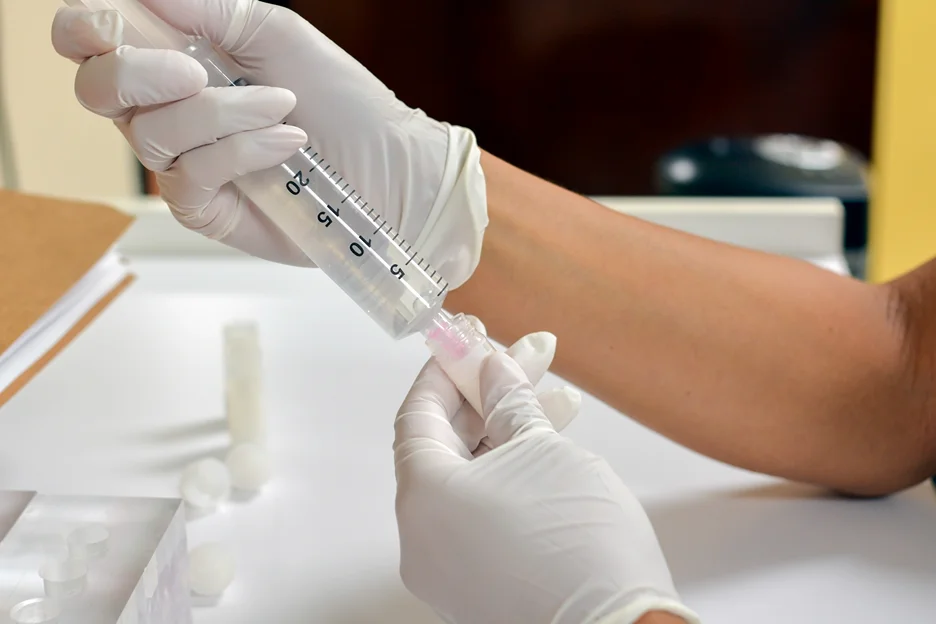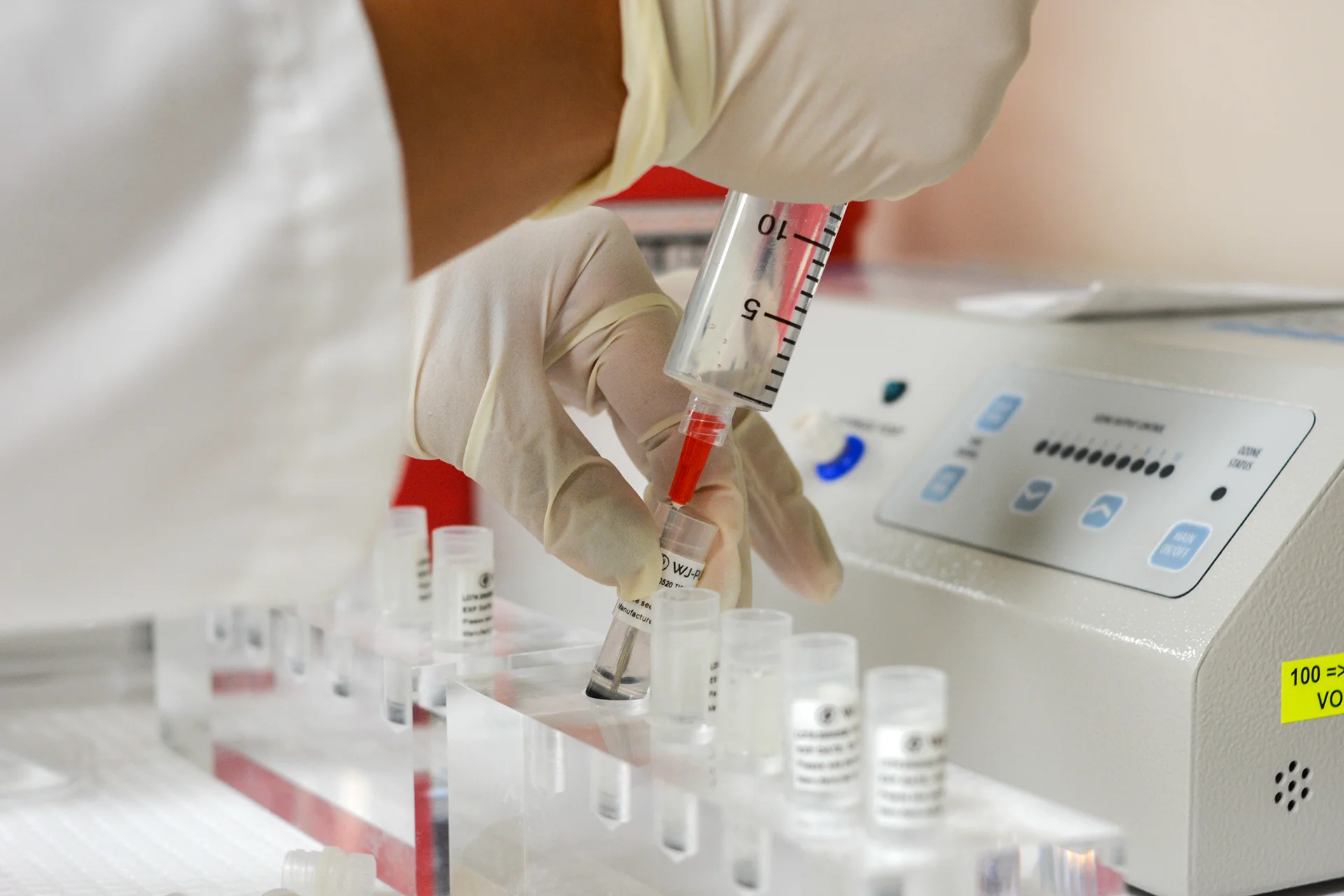At Kaly, we understand how isolating and limiting chronic back pain can feel. Our goal is to empower you with the knowledge and support you need to take control of your pain management.
For many, back pain has become an unwelcome yet familiar companion that prevents them from fully engaging in work, hobbies, and quality time with loved ones. But what if there was a cutting-edge treatment that could potentially provide lasting relief for chronic back pain?
Keep on reading to learn how stem cell therapy is emerging as a promising option for improving mobility and reducing sciatic nerve pain.
What are Stem Cells and How Could They Help Treat Sciatica?

Stem cells have recently emerged as a potential alternative for treating chronic back pain conditions like sciatica. But what exactly are stem cells and how do they work?
Stem cells are the body’s “master cells”, found throughout our tissues. They have two unique properties that make them valuable for treating injuries and diseases:
- Stem cells can differentiate into specialized cell types – they can transform into muscle, nerve, or other cells needed to repair damage.
- Stem cells secrete growth factors and anti-inflammatory proteins that promote healing.
Researchers believe stem cell injections could help relieve sciatica in a few key ways:
- Reduce inflammation – Stem cells have anti-inflammatory effects that may calm the irritation of the sciatic nerve. This nerve irritation is what causes the burning, stabbing sensation.
- Encourage nerve repair – Stem cells can stimulate regeneration of nerve tissue through cell differentiation and secretion of proteins that nurture nerve growth. This could help repair damage to the nerve.
- Stop pain signals – Stem cells also modulate pain signaling pathways, which may block transmission of pain from the irritated nerve to the brain.
Sciatica can be tough to treat with conventional methods like medication or surgery alone. That’s why regenerative techniques using stem cells are generating considerable interest and research.
What Does Current Research Reveal About Stem Cell Therapy for Sciatica?
Stem cell therapy is truly one of the most exciting frontiers in medicine. But does current research match the hype? Let’s explore what studies are revealing.
Preclinical studies in animal models produce intriguing early results:
- In rats with sciatic nerve injury, mesenchymal stem cells decreased nerve scarring and muscle atrophy while promoting regeneration of axons.
- In rabbits with herniated discs, injected stem cells prevented leakage of disc material, increased disc thickness, and reduced nerve compression.
While animal research is promising, how effective is stem cell therapy in human sciatica patients? Ongoing clinical trials are working to answer this question.
- In one safety trial, patients with disc herniation underwent laparoscopic stem cell injection. At 12 months follow up, a significant number achieved substantial pain and disability reduction with no adverse effects.
- Another study followed patients receiving ultrasound-guided stem cell injection for sciatica. At 6 months, most of them experienced clinically meaningful improvement in pain scores and quality of life.
So far, results are positive but limited. Larger, controlled studies are still needed to evaluate long-term outcomes. However, early findings and anecdotal patient reports suggest stem cell therapy could provide lasting sciatica relief when other treatments fail.
What are the Procedures Like for Getting Stem Cell Therapy for Sciatica?

If you and your doctor decide stem cell therapy may help your sciatica, here’s a look at what the treatment process usually involves:
Stem Cell Collection
First, stem cells must be harvested from either your bone marrow or fat tissue. For bone marrow aspiration, cells are extracted from the iliac crest of the hip bone. Fat stem cells are retrieved through liposuction of the abdomen or thighs. Both procedures are minimally invasive.
Stem Cell Processing
The collected cells are brought to a lab, where they’re processed and concentrated into a treatment dose. This takes 2-4 weeks.
Stem Cell Delivery
Your purified, concentrated stem cells can then be injected around the sciatic nerve itself, into the epidural space surrounding the spinal cord, or administered intravenously. This is an outpatient procedure done under light sedation or anesthesia.
Follow-up Treatment
Most patients require multiple stem cell injections spaced 1-2 months apart for the best pain relief, along with physical therapy. It can take several weeks to months to experience the full effects.
Many patients report minimal pain and quick recovery after their injections. With both numbness and shooting pains reduced, they can walk and move freely again. While individual results vary, many find lasting relief from debilitating sciatica pain after completing their stem cell therapy.
How Much Does Stem Cell Therapy for Sciatica Cost?
Stem cell therapy is currently expensive since it’s not covered by insurance and still undergoing research. Below are some estimated figures for the therapy:
| Cost | Amount |
| Initial consultation | $300-$500 |
| Cell harvesting procedure | $2,000 – $5,000 |
| Cell processing/lab fees | $2,000 – $10,000 |
| Injection sessions | $2,000 – $10,000 per treatment |
The number of sessions needed and type of stem cells used impact the overall costs significantly. Many clinics offer payment plans or connect patients with medical loans to finance treatment.
While expensive, stem cell therapy may still be cheaper and less risky than long-term disability and chronic pain management. For the right patient, the investment could provide lasting relief from debilitating sciatica.
What Are the Potential Risks and Benefits of Stem Cell Injections?
Any treatment carries a balance of risks and benefits. What should you consider regarding stem cell therapy for chronic sciatica?
On the benefit side, stem cell injections offer a lasting solution that targets the root cause of your pain, unlike medications that only mask symptoms temporarily. Physical therapy alone has limited capacity to heal structural damage.
And major surgery like spinal fusion or laminectomy can provide relief but involves extended recovery periods and high complication risks. For many, stem cell therapy is an appealing middle ground.
As for risks, under proper protocols the likelihood of serious adverse effects from stem cell injections is very low. Mild side effects like temporary pain at the injection site are possible.
Some concerns, often theoretical, include:
- Cells migrating to unwanted areas like the spine or brain. But imaging guidance greatly reduces this risk.
- Allergic reaction or infection. Rigorous processing and sterile techniques minimize these chances.
- Immune issues when using allogeneic donor cells. Autologous cells from your own body avoid this problem.
- Tumor formation. No reports of cancer link stem cell treatments directly. But some conditions like diabetes may increase risk. Thorough screening is key.
For most patients, potential benefits seem to outweigh minimal risks. However, the long-term safety profile of stem cell therapy is still being defined. Carefully weighing options with your doctor is advised.
The Future Looks Bright for Stem Cells Improving Sciatica Treatment

Stem cell therapy represents an exciting new frontier for treating chronic nerve pain conditions like sciatica. While more research is still needed, current studies and anecdotal reports indicate regenerative techniques like stem cell injections may help many patients find relief when other options fail.
As medical science continues to progress, we’re optimistic that stem cell treatments for stubborn back and leg pain will become more advanced, accessible and affordable. At Kaly, we’ll be sure to keep you updated on the latest developments in using stem cells to manage sciatica.
